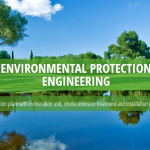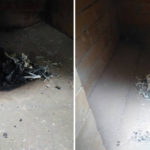Doubel Combustion Chamber
All Incinerators are Doubel Combustion Chamber with One Fuel Burner Each. After Burner Technology for Completely Combustion and Cleaner World.
Read MoreHigh Temperature Incineration
Temperature Range 800 Degree to 1200 Degree in Combustion Chamber. Temperature Thermocouple Monitor and Controller. High Quality Fire Brick and Refactory Cement.
Read MoreGet Lastest News
There are latest incinerator news like technical, public news, business tender for medical waste incinerator,animal incineration, pet cremation
Read MoreNanjing Clover Medical Technology Co.,Ltd.
Email: sales@clover-incinerator.com | Tel: +86-25-8461 0201
Regular model incinerator for market with burning rate from 10kgs to 500kgs per hour and we always proposal customer send us their require details, like waste material, local site fuel and power supply, incinerator operation time, etc, so we can proposal right model or custom made with different structure or dimensions.
Incinerator Model YD-100 is a middle scale incineration machine for many different usage: for a middle hospital sickbed below 500 units, for all small or big size family pets (like Alaskan Malamute Dog), for community Municipal Solid Waste Incineration, etc. The primary combustion chamber volume is 1200Liters (1.2m3) and use diesel oil or natural gas fuel burner original from Italy.
Latest Post
Sudan Medical waste Treatment Scheme
• A burn rate of 25 – 30kg/hr.
• Consists of two chambers to ensure significant reduction of emissions and be capable of temperatures in the range of 800-1000˚c.
• Incinerator must be of a low maintenance design, be diesel fuelled and need no more than 15 amp 220-250 V power. KW consumption per hour should be stated.
(1) What are main differences between medical incinerators: YD-10C and TS10(PLC)?
(2) After combustion, the medical waste becomes smoke? Without smell? No pollution?
(3) What should we do to release the smoke? Prepare a pipe to direct the smoke to factory outside?
(4) Any operation guide for reference, we worry that it’s difficult to operate?
• The incinerator should also be able to run off a generator.
• The incinerator should have option of tank and should use no more than 12L of diesel fuel per hour to burn 25- 30kg of waste.options for medical waste incineration for Kabul, Afghanistan
• Design must be such to minimize risk to operators and have a simple start sequence to minimize operator training and skills
• Solid waste reductions in the range of 90 – 97% should be routinely achieved.a central thermal treatment station in the city of Khartoum (9 million inhabitants) we started with two units of autoclave that treat up to 18 tons a day so far, and looking forward to add an incineration plant/s to serve for medical, pharmaceutical, and hazardous waste.
Afterburner Preheat Incinerator
PRIMARY CHAMBER
Heavy-duty steel casing
High quality refractory lining and insulation Large full size top load counterbalanced door
1 x oil/gas fired ignition burners operated on/off
SECONDARY CHAMBER
Heavy-duty steel casing
High quality refractory lining and insulation 2 second gas residence time
1 x oil/gas fired ignition burners operated on/off
CHIMNEY
Heavy-duty stainless steel casing
CONTROL PANEL
Control of primary and secondary burners Temperature Monitoring with 4 digit display Thermostat control device for burner (fuel saver) Timer control 0- 12 hours
Integral fan timer control
Technical Specifications
Fuel
Diesel
Capacity
900kg (1.35m³)
Burn Rate
150kg/h
Avg Ash Residue
3%
Avg Fuel Consumption p/hr
20ltr
Operation
Min. Operating Temperature 950°C
Max. Operating Temperature 1320°C
Residency Time in Secondary Chamber 2 Seconds
Temperature Monitoring YES
ANCILLARIES
Operating and maintenance manuals Spares list
KEY FEATURES
•Afterburner Preheat
•Incineration temperatures in excess of 1300°C
•5mm steel casing and fully insulate
•Dense refractory concrete lining rated to 1600°C
GENERAL SPECIFICATIONS FOR INCINERATORS
Primary and secondary burners: Separate electrically spark-ignited primary burners and secondary burners with automatic control shall be used to achieve the specified temperature requirements in the primary and secondary chambers. The flames of the primary and secondary burners shall not impinge on the incinerator walls or floor.
The primary combustion chamber must:
1. Be accepted as the primary combustion zone.
2. Be equipped with a burner/s burning gas/fuel or low sulphur liquid fuels.
Other combustion methods will be judged on merits.
3. Ensure primary air supply is controlled efficiently
Ensure minimum exit temperature is not less than 850oC
Air supply: Air supply in the primary and secondary chamber should be regulated between 30%-80% and 170%- 120% of stoichiometric amount respectively. Suitable flow measurement devices shall be provided on the primary and secondary air ducting. The combustion air shall be supplied through a separate forced draft fan after accounting for the air supplied through burners.The secondary combustion chamber must:
1. Be accepted as secondary combustion zone.
2. Be fitted with secondary burner/s burning gas or low sulphur liquid fuel or any suitable fuel.
3. Ensure secondary air supply is controlled efficiently.
4. Ensure flame contact with all gases is achieved.
5. Ensure residence time is not less than two (2) seconds.
6. Ensure the gas temperature as measured against the inside wall in the secondary chamber & not in the flame zone, is not less than 1100oC.
7. Ensure the oxygen content of the emitted gases is not less than 11%.
Ensure both primary and the combustion temperatures are maintained until all waste has been completely combusted
lnsulation: lnsulation to be used for masonry, reinforced concrete, or non-combustible material shall prevent damage to the foundation from excessive heat and shall be of a thickness to limit the outer casing to a maximum temperature of 66°C in an ambient temperature of 21°C when the incinerator is operating at full capacity.
Refractory: Refractory shall be #super duty# and heat-resistant to a minimum of 1100°C in the primary chamber and 1250°C in the secondary chamber. Refractory shall also be abrasion resistant in the prlmary chamber, constructed of plastic or castable type refractory, designed to prevent bulging and destruction due to heat stress, capable of supporting more than twice the hourly burning rate and preventing leakage of fluids, and with a minimum thickness of 11O mm for walls and hearths
Dual-chamber controlled air incinerator or dual- chamber pyrolytic incinerator
Types of incinerator design acceptable: Dual-chamber controlled air incinerator or dual- chamber pyrolytic incinerator
Materials of construction: The incinerator shall not have any asbestos, asbestos-containing substances, mercury thermometers, and mercury switches. Refractory materials shall be able to meet relevant standards under ISO TC33 and CEN/TC 187.Waste feed system into the combustion chamber batch or continuous loading: For continuous loading, the automatic charging ram or auger feed system shall be capable of injecting small amounts of waste at frequent intervals and should be able to prevent waste from being fed when the combustion chamber temperature is less than 850°C. In addition, the waste feed should only be able opened at or below 50°C in an ambient temperature of 21°C.Primary combustion chamber: Shall be constructed with a casing (reinforced to withstand internal pressures without deflection or damage to the refractory or other components) supported by a structural frame and provided with refractory lining and insulation
Access doors, openings, and gaps: All access doors, openings, and gaps shall be sealed to prevent emission of smoke and exhaust gas and to block admission of air during incinerator operations. Doors exposed to flame or direct heat of combustion gases shall be lined with the same type and thickness of refractory lining and insulation as that used in the combustion chamber
Grate system for the primary chamber Moving grate, traveling grate, reciprocating grate, or rotating drum grate
Primary combustion chamber temperature # 850°C with no cold spots
Secondary combustion chamber: Shall be constructed with an exterior casing (reinforced to withstand internal pressures without deflection or damage to the refractory or other components) and provided with refractory lining and insulation
Secondary combustion chamber temperature 1100°C or higher
Secondary combustion chamber residence time # 2 seconds after the last injection of air in the secondary chamber
a DUCK farm incinerator
a DUCK farm incinerator, we need to buy a medium size incinerator for biological waste, more specific DUCKS.a pet crematorium in ireland.Equipment Double chamber medical infectious waste incinerator Capacity 10-30 kg per hour Characteristics of waste
Mainly syringes and needles from immunization routine and campaign activities. However, the following average characteristics are considered*:
heating value above 2000 kcal/kg (8370 kJ/kg); content of combustible matter above 60%; content of non combustible solids below 5%; content of non-combustible fines below 20%; moisture content below 30% by weight
Combustion performance: The medica waste incinerator shall be capable of reducing waste to ash not exceeding 10% of the total combustible charges.
Outdoor installation. The medical waste incinerator will be installed outdoors. All incinerator components shall be suitable for but not limited to outdoor shaded installation, including electric motors, be resistent to corrosion, moisture and related weather elements.
could you please forward me some information. a suitable Incinerator for Incineration of oil, plastic hazardous waste, sludge waste, hazardous filters etc.














